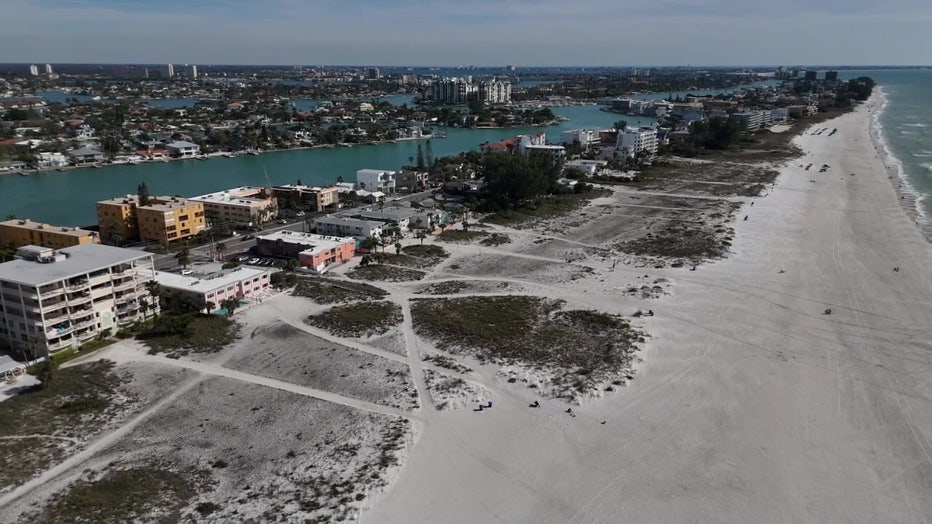Gulf of Mexico Conference in Tampa centered around coastal flooding and resiliency
TAMPA, Fla. - Leaders from around Florida are coming together to take a closer look at the future of the Gulf Coast.
More than 1,000 coastal scientists, managers, nonprofit leaders and state and federal leaders came to the Gulf of Mexico Conference this week.
Some of the major talking points throughout the conference centered around coastal flooding and resiliency.
"Knowing the forecast and the future," Hank Hodde, a community resilience strategist with Jacobs Engineering said. "We live on the water by the water, with the water. We love the water, right?"
Hodde works in partnership with Pinellas County. He says they’re currently working on a flood mitigation plan with the county to help propose mitigation and adaptation strategies.
"We're very surprised about future title flooding," Hodde said. "So when you think about sea level rise and the small increments of water that's coming up, relative sea level rise, and then you correlate that with king tide."
Hodde said they expect the nuisance flooding from every day weather events to continue.
"And that is a more chronic problem that affects infrastructure," Hodde said. "And it affects homes and affects commutes, you know, just daily life."
READ: Historic Memorial Clock Tower restored at Hillsborough High School in Tampa
He said they’re also looking at data to assess future storm surge scenarios.
Hodde said $1 million in HUD funding is helping drive a number of the projects throughout the county. He said some of that money is being invested in imagery collection to assess elevation levels of land throughout the county that encompasses more than 100,000 homes.

According to Hodde, a big component to strengthening and protecting the coastline lies in preparation from the county and residents.
"We need to know if a big rain event is coming," Hodde explained. "How long is that rain going to persist? Then we need, in that case, we need to look at our 100-year, 24-hour year floodplain and make adjustments for that. We need to look at the tides and the moon calendar and know when our King Tide is going to take place."
Other experts at the conference also discussed an ongoing need for dune restoration and preservation along the Gulf Coast.
"Investing money in healthy dune restoration, dune revegetation," Michael Savarese, a coastal geologist and faculty member with Florida Gulf Coast University said.
Savarese said this has proved particularly important in southwest Florida, after assessing damage from Hurricane Ian.
READ: My Safe Florida Program to prioritize age, income limitations
"Oftentimes, important assets are sitting at low elevations and are susceptible to flooding," Savarese said. "So, the surge is high and goes over the protective dunes, like we experienced during Ian. Then, all of a sudden, everything behind it is vulnerable to flooding."
He said there is also a lot of development that has sprouted up dangerously close to or even on top of the dunes.
Savarese said storm surge is a major concern, but not only incoming surge.
"That outgoing surge caused massive erosion on the beaches and the dune fields in places where, development was," Savarese said.
He said it’s crucial that leaders identify their own region’s biggest risks and vulnerabilities, in order to keep history from repeating itself.
Experts said a lot of vulnerability assessments and data collected can be used to apply for more funding for projects like restoration, storm water mitigation and other protective measures.
WATCH FOX 13 NEWS
SIGN UP: Click here to sign up for the FOX 13 daily newsletter


